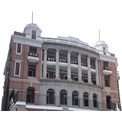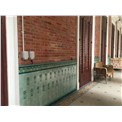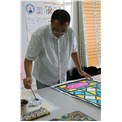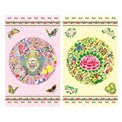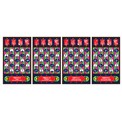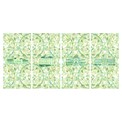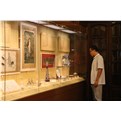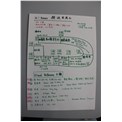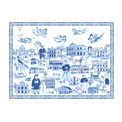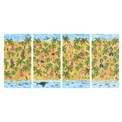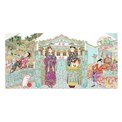-
History & Society
- Education in Pre-war Hong Kong
- History of Taikoo Sugar Refinery
- Hong Kong Products Exhibition
- Local Festivals Around the Year
- Post-war Industries
- Pre-war Industry
- The Hong Kong Jockey Club Archives
- Tin Hau Festival
- Memories We Share: Hong Kong in the 1960s and 1970s
- History in Miniature: The 150th Anniversary of Stamp Issuance in Hong Kong
- A Partnership with the People: KAAA and Post-war Agricultural Hong Kong
- The Oral Legacies (I) - Intangible Cultural Heritage of Hong Kong
- Hong Kong Currency
- Hong Kong, Benevolent City: Tung Wah and the Growth of Chinese Communities
- The Oral Legacies Series II: the Representative List of the Intangible Cultural Heritage of Hong Kong
- Braving the Storm: Hong Kong under Japanese Occupation
- A Century of Fashion: Hong Kong Cheongsam Story
Geography & EnvironmentArt & Culture- Calendar Posters of Kwan Wai-nung
- Festival of Hong Kong
- Ho Sau: Poetic Photography of Daily Life
- Hong Kong Cemetery
- Sketches by Kong Kai-ming
- The Culture of Bamboo Scaffolding
- The Legend of Silk and Wood: A Hong Kong Qin Story
- Journeys of Leung Ping Kwan
- From Soya Bean Milk To Pu'er Tea
- Applauding Hong Kong Pop Legend: Roman Tam
- 他 FASHION 傳奇 EDDIE LAU 她 IMAGE 百變 劉培基
- A Eulogy of Hong Kong Landscape in Painting: The Art of Huang Bore
- Imprint of the Heart: Artistic Journey of Huang Xinbo
- Porcelain and Painting
- A Voice for the Ages, a Master of his Art – A Tribute to Lam Kar Sing
- Memories of Renowned Lyricist: Richard Lam Chun Keung's Manuscripts
- Seal Carving in Lingnan
- Literary Giant - Jin Yong and Louis Cha
Communication & Media- Hong Kong Historical Postcards
- Shaw Brothers’ Movies
- Transcending Space and Time – Early Cinematic Experience of Hong Kong
- Remembrance of the Avant-Garde: Archival Camera Collection
- Down Memory Lane: Movie Theatres of the Olden Days
- 90 Years of Public Service Broadcasting in Hong Kong
- Multifarious Arrays of Weaponry in Hong Kong Cinema
-
History & SocietyGeography & EnvironmentArt & Culture
-
View Oral History RecordsFeatured StoriesAbout Hong Kong Voices
-
Hong Kong Memory
- Collection
- All Items
- Colouring the Revolution: Chromatic Vibrancy of Wilson Shieh in Kom Tong Hall (Image)
Recently VisitedColouring the Revolution: Chromatic Vibrancy of Wilson Shieh in Kom Tong Hall (Image)
Built in 1914, Kom Tong Hall was originally the residence of prominent Hong Kong businessman Ho Kom Tong. It was gazetted as a Declared Monument of Hong Kong in 2010. The Hong Kong Government bought Kom Tong Hall in 2004 and converted it into the Dr Sun Yat-sen Museum. The architectural details tell the life stories of the building. The patterns on the tiles give clues to the owner's interest and the cultural features of the times. Wilson Shieh hoped to inject more vivacity of colours into Kom Tong Hall through his paintings. Dr Sun Yat-sen lived in his hometown, Cuiheng Village in Xiangshan County, Guangdong Province when he was young. The region produced a local type of enamel ware called Guangcai, or 'Canton enamels'. Such images and decorations constituted the theme of this panel. (Guangdong, late Qing Dynasty by Leung Lai Man, Jess) The window designs of Shanghai that merged traditional sculpture and western-style stained glass windows were used for featuring the period of the 1911 Revolution. (Early Republic of China by Wilson Shieh)The screen pattern in Victorian style implied Dr Sun Yat-sen's period of studying in Hong Kong. (Hong Kong, Victorian era by Wong Wing Shan (Flyingpig)) After failure of first uprising in 1895, Dr Sun Yat-sen underwent an exile in Japan. The ukiyo-e genre which depicted Japanese customs and lifestyles was aptly regarded as the representative feature of pre-modernist Japanese art. (Japan, Meiji period by Cheng Ting Ting and Cho Wing Ki) Converted into Dr Sun Yat-sen Museum, Kom Tong Hall is now displaying with historical archives and artefacts to tell the story of Dr Sun Yat-sen. Wilson Shieh had sorted out seven important stages in Dr Sun Yat-sen's life, studying the respective regional features of the times. From the 16th to 20th century, Macau had been a Portuguese colony. The blue-and-white ceramic tiles have become an iconic feature of Macau. (Macau, Portuguese style by Cho Wing Ki)In the 19th century, Hawaii was still under the rule of the local indigenous dynasty. The painting there featured rich motifs of tropical forests. (Hawaii, 19th century by Cheng Ting Ting) The Chinese in Southeast Asia provided Dr Sun Yat-sen with the much needed financial support. The rich and colourful Chinese images and symbols were representatives of cultural integration. (Nan Yang (or Southeast Asia), Nyonya style by Leung Lai Man, Jess)Copyright © 2012 Hong Kong Memory. All rights reserved.
| Set Name |






